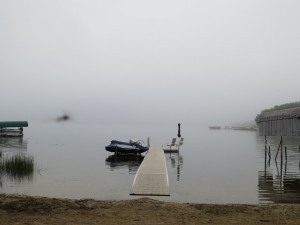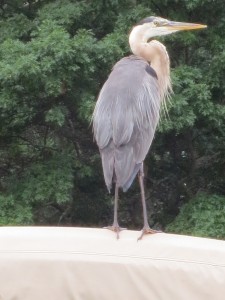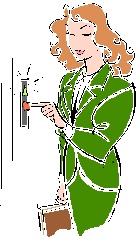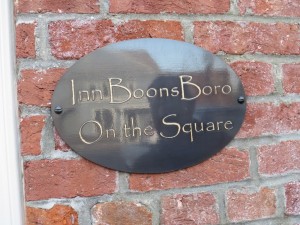Posted at Jun 11, 2014 3:12 pm
I’m talking about THE CALL. Stop on over if you get a chance.
http://www.rubyslipperedsisterhood.com/meet-2014-golden-heart-finalist-nan-dixon/

Be the First to Comment
Posted at Jun 2, 2014 4:08 am
I’m continuing the internet phenomenon of the My Writing Process Blog Relay. The lovely Leslie Lynch, my 2013 Golden Heart® sister, tagged me last week. You can check out her writing process here. I’m excited to report her first book, HIJACKED, comes out TODAY!! WHEEEEE!!!! I know I’ll be hitting the buy button on this Golden Heart® finalist manuscript. Thanks for the tag, Leslie!
So here goes – WHAT AM I WORKING ON?
 Revisions! I sold my 2013 Golden Heart® manuscript SOUTHERN COMFORTS to Harlequin SuperRomance. I got the call April 30th and received my revision letter on May 8th. There were 177 comments from my editor. Revisions! I sold my 2013 Golden Heart® manuscript SOUTHERN COMFORTS to Harlequin SuperRomance. I got the call April 30th and received my revision letter on May 8th. There were 177 comments from my editor.
I’ve been focused on ripping apart and adding scenes. And am just about ready to hit send on this set of edits. I had two revise and resubmit letters from Megan Long, my editor, before they took a chance and bought the book. (I still get a little zing every time I say my editor) Silly me—I thought the next set of revisions would be lighter. But writing isn’t for the weak. My publication date is December 2014. I’m so thrilled and grateful Megan Long took a chance on this book and for Laura Bradford, agent extraordinaire, for representing me!
I’ve also been working through revisions on my 2014 Golden Heart® finalist manuscript POETIC JUSTICE with my critique group. It is a finalist in the Short Contemporary category and is Romantic Suspense. Once I send the revisions for SOUTHERN COMFORTS off, I have to dive back in and finish those revisions.
HOW DOES MY WORK DIFFER FROM OTHERS OF ITS GENRE?
Wow – this is a hard question. I write families. Either groups that eventually find and form families or actual families. SOUTHERN COMFORTS is set in a Savannah Bed and Breakfast run by three sisters. Although much of contemporary romance is set in small towns, I tend to set mine in cities like Savannah or Minneapolis, although I have started a series that I set in a ski resort in Montana. It’s actually fun creating a town and if Touch the Sky Montana reminds you a little of Big Sky, its’ because my parents had a condo on the mountain.
I do tend to write too much business in my manuscripts. It is what is familiar. I was a VP of Finance for a pharmaceutical company and also a CFO of medical group. In the current revisions I’m pulling back on tons of the business bits I had included.
WHY DO I WRITE WHAT I WRITE?
I didn’t know the first hot mess novel that I wrote was a romance. It now lies gathering dust bunnies under the bed (or sitting on diskettes if you remember those). But once I joined my local RWA chapter, I figured out I was writing romance. (Even when I joined, I thought I was joining a Fiction Writers group. I was clueless!) I don’t think I’d ever read a true romance, but the books I loved usually included a relationship with a happily ever after. Now I devour romance books, because I finally embraced reading my genre. Love it! What’s more powerful than love overcoming all odds and healing the emotionally wounded?
HOW DOES YOUR WRITING PROCESS WORK?
I usually have an idea—a what if idea. What if four sisters were struggling to turn their family mansion in Savannah into a B&B? (My sisters and I were visiting Savannah on a sister weekend.) What if a woman was helping a sister by shuttling poets to a conference and was kidnapped. (I was doing just that when I came up with the premise for POETIC JUSTICE) What if three men find out they are almost triplets, but they were born of three different mothers? (THE PERFECT CHILDREN was inspired by a BBC radio story on genetic modification when I was driving home from dropping my daughter off at college.)
I used to be a dedicated pantster. But as I learned more craft, I began to document more of the plots before I began the first draft. Initially, I used a Big Beautiful Worksheet from an online class by Laurie Schnebly Campbell called Plotting Via Motivation. For the last several books I’ve revised and drafted, I’ve begun using Blake Snyder’s Beats. I may not be 100% true to every beat, but my books now have more form in the first draft.
When I begin a book. I complete a GMC for each character. I also create a background document that contains their physical attributes. I give them a birthday and use Linda Goodman’s Sun Signs to get character traits that fit with their GMC. In my background document I keep character names, locations, key information, hyperlinks on research I’ve done, and any other information that I want to be able to access without searching my manuscript. I keep both documents open when I am drafting or revising.
I also log in and out of a spreadsheet as I work. And because it’s data, I might even make a graph or two. Here’s one I made while working on revisions. I may not be a financial executive anymore, but I still love numbers and charts.
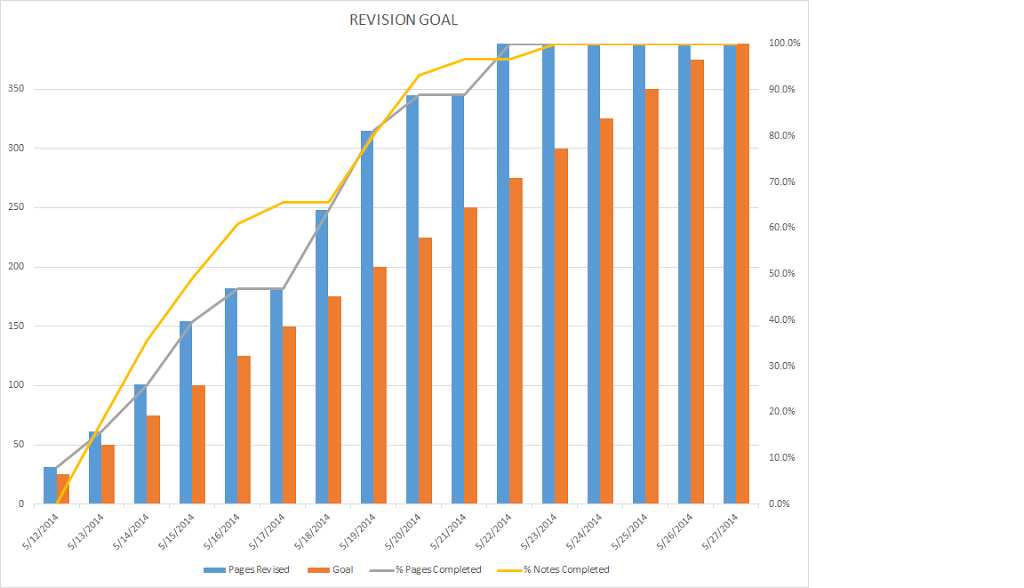
I also set goals, another residual activity from my business background. I love to check off completed activities on my To Do lists.
There are a number of groups that keep me going. I’ve been lucky enough to final in the Golden Heart® five times. I’m a proud member of the Unsinkables, The Startcatchers, The Lucky 13s and this year’s class—The Dreamweavers. The women in these groups are inspiring, resilient, fabulous cheerleaders and wonderful consolers. I’m also very active in Midwest Fiction Writers and somewhat active in WIsRWA . But I learned how to write in my fabulous critique group which currently consists of Ann Hinnenkamp, Kathryn Kohorst, Leanne Farrell and Neroli Lacey.
WHO’S UP NEXT WEEK ON THE MY WRITING PROCESS BLOG TOUR?
I’m tagging the fabulous Kay Hudson a three time Golden Heart® Finalist. We’ve been Starcatchers and Lucky 13s together. I’m also tagging Ellen Lindseth. Ellen’s a chaptermate at MFW and a 2014 Golden Heart® finalist with her WWII historical novel. So happy to be on this wicked fun ride with her this year.
Be sure to visit them next week on June 9th.
Thanks again, Leslie, for tagging me!
32 Comments
Posted at Jan 9, 2014 10:09 pm
 During the 2013 NaNoWriMo, I realized I’ve increased my drafting productivity. And this productivity has increased exponentially. During the 2013 NaNoWriMo, I realized I’ve increased my drafting productivity. And this productivity has increased exponentially. Before this November NaNoWriMo, it had been a long time since I’d actually drafted a manuscript. (Since I keep a log, I can tell you, it had been 5 months.)
That doesn’t mean I stopped writing. I’ve revised three different manuscripts. (One three times.) Sure I rewrote and added complete new scenes in those books, but I think revising uses a different part of my brain than drafting. When I’m drafting, even when I’m not writing, I’m thinking about my characters, about the next scene, or the next chapter. Or I’m ripping out my hair, wondering where the book should go. Wanting to wail when the GMC and other plot tools I’ve created fail to help me out of the corner I just painted my characters into.
But as with any other activity, my writing improves the more I force myself to stay in my chair with my hands on the keyboard.
This makes sense. When I took piano lessons, I had to practice at least 30 minutes a day, the same with guitar and voice lessons. Dance required hours of repetition to perfect a movement, weeks of practice to perfect a dance. Golf required even more practice. I hit a minimum of 200 balls a day, spent an hour around the practice green and usually played 27 holes.
Writing isn’t any different than sports. It requires practice to improve. When I first participated in Book-in-a-Week, I was amazed at other writers’ productivity.
Here’s a comparison of April/May 2008 BIW with my daily November 2013 NaNoWriMo.
|
Words per Hour
|
|
Apr/May ’08
|
Nov ’13
|
|
706.1
|
921.3
|
|
476.5
|
892.2
|
|
377.2
|
1,117.8
|
|
404.3
|
1,108.9
|
|
544.3
|
1,217.5
|
|
387.9
|
1,085.8
|
|
571.0
|
1,370.1
|
|
648.3
|
1,732.3
|
|
722.0
|
1,111.1
|
|
790.6
|
1,391.3
|
|
|
|
I write more than twice as fast as I did in 2008. (You can see that it takes a while to get back into the groove even now.)
There are number of reasons for this productivity improvement. I’ve turned off my internal editor. I plot more. I set goals. (Really important to me.) And I think because I am flexing my writing muscles, I am getting better, faster, stronger. (For some reason the Million Dollar Man theme is running through my head.)
I know that a lot of the magic happens when I revise. That’s when I layer in more emotion and add beats. But to help me really understand the story and my characters’ motivation, I need to get a first draft down. And the faster I can do that, the faster I can start revising.
So my advice? Get out and flex those muscles. Establish good writing habits. Turn off that internal editor. And don’t use excuses to push away from the keyboard.
Be the First to Comment
Posted at Sep 8, 2013 8:16 pm
I love To Do lists. They keep me grounded and make sure I get things accomplished. (And hopefully help me to remember important things.) But sticking to my lists sometimes means I miss what’s going on around me. Sometimes I forget to take a breath and enjoy the world.
Back in July we were up at the cabin celebrating 4th of July. For some reason I was the last at the lake, spending one more night before heading back home after the holiday. The beach was picked up, chairs secured in the boathouse along with the beach toys. The cabin was clean and I was waiting for the sheets to dry. I’d almost put away my kayak the evening before, but decided I would paddle in the morning for exercise instead of taking a walk.
I’m so glad I did. When I woke that morning, the fog was curling off the water. I couldn’t even see the other side of the lake. The fog muffled any sound and the air was rich and moist. I grabbed my camera and slung it around my neck hoping to see one of the pair of loons that come back each summer.
 I paddled over to the bay hoping the water lilies had opened, but as you can see, they were tightly closed. Instead, I found some wild irises. I paddled over to the bay hoping the water lilies had opened, but as you can see, they were tightly closed. Instead, I found some wild irises. 
As a paddled along the shore, I turned my head and not twenty feet away from me was the gray heron that hunts in the lake.
The buzz of my camera lens opening made him take flight. Oh I wish you could have seen him fly through the fog. Luckily, he settled on a boat canopy across the lake. This time I opened the camera before I got close and got some lovely pictures. Somehow I think he posed for this one.
I’m so glad I took the time to breath that quiet still July morning.
2 Comments
Posted at Aug 8, 2013 12:29 am
For those of you who were at the Road to Publication Conference and asked me to post the workshop materials, they are now up at www.nandixon.com. Enjoy!
Be the First to Comment
Posted at Aug 1, 2013 3:25 pm
I’ll be presenting a workshop on Elevator Pitches at the Romancing the Lakes Road to Publication Conference. It will be Saturday August 3rd in Prior Lake, Minnesota. I’m looking forward to it! There are still registration slots open.
I’ve done this workshop a couple of times, the last time at the Golden Network conference in Anaheim. Always fun!
Be the First to Comment
Posted at Jun 14, 2013 12:20 am
I took a belly dancing class last week.
It was a fund raiser for Out on a Limb Dance Company. I’m on the board. But that’s not why I took the class. It was a fun get together.
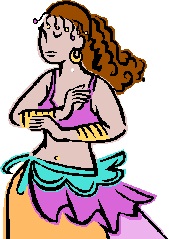 Picture a dozen women wearing sweatpants or yoga clothes. Two were in loose dresses. (Maybe not the best clothes for doing Downward-facing Dog.) We ranged from mid-twenties to mid-sixties and were all body types. We had coin-encrusted scarves wrapped around our hips, attempting to move them in figure eights. The three young women in their twenties who dance with the company made it look easy. But some of the class members really picked up the hip action. Picture a dozen women wearing sweatpants or yoga clothes. Two were in loose dresses. (Maybe not the best clothes for doing Downward-facing Dog.) We ranged from mid-twenties to mid-sixties and were all body types. We had coin-encrusted scarves wrapped around our hips, attempting to move them in figure eights. The three young women in their twenties who dance with the company made it look easy. But some of the class members really picked up the hip action.
Although I had taken belly dancing decades ago, that was when I was a fit college student. I still remembered some of the moves, but let me tell you, the body doesn’t always do what you want it to do.
The worst for me was snake arms. I don’t know if I was using my biceps, deltoids or triceps. But whatever the name of the muscle group on the top of my upper arm, by the end of the class it ached. And here I thought all that gardening and yoga planks would keep me in shape. That apparently works the forearms and not the upper arm.
We shimmied. At first we did slow hip pops, one with each beat of the music. Think hip twitches. Feet close together, knees bent, a controlled shaking of the booty. Then the pace picked up. The jingle of the coins on the scarves added texture to the eastern music playing. Finally the teacher had us shimmying as fast as we could shake it. The instructor insisted we shake everything that could jiggle, because we were glorious women. Shake the belly, the butt and those thighs. Now the coins were a steady ching-ching-ching filling the studio with bright sounds. (Almost covering our groans.)
We did a shimmy circle, walking and shimmying at the same time. Thanks goodness we weren’t also trying to chew gum. Our circle wasn’t round and our shimmies were offbeat, but our laughter was musical.
Since the class took place in a yoga studio (Tula Yoga and Wellness in Saint Paul) we cooled down with yoga breathing, shoulder stands and stretches.
After class, the woman who had donated the event hosted a wine and food hour. The food and wine were wonderful, but made even better by the graciousness of our hostess, Ann Blackburn and a community of women who celebrated being women.
Writing is such a solitary endeavor; I sometimes forget to get out of my office. Writing conferences provide that for me, but to be a well-rounded writer, I need to stay open to all sorts of stimuli. Even though my shoulders and lower back were aching the morning after, I’m so glad I went! And some heroine just may take a belly dancing class in my next book.
Be the First to Comment
Posted at May 19, 2013 3:14 pm
I love conference season. It’s a chance to escape my writing cave, meet other writers, learn my craft, pitch my books and just have fun. But more important, as an unpublished writer, a conference is a professional opportunity.
Here are my suggestions to make your next conference—work for you. A lot of these suggestions are geared for RWA, but can apply to the regional conferences.
Set conference goals: Are you trying to learn about a specific part of the craft of writing? Conflict has always been my nemesis; so I try and attend as many workshops on conflict as available. Do you have a specific publisher you want to write for? Attend the spotlights. They give advice on what they’re looking for in submissions. Check out workshops that give you critique opportunities like the opening pages or query letter reviews.
Meet new people: Don’t forget your business cards. I’ve made so many wonderful friends at conferences. This is my third time to the Golden Heart dance. This year I’ll meet a new set of Golden Heart sisters and see my Unsinkable and Starcatcher friends. Follow your new friends on Facebook or Twitter and support their successes.
Prepare your Pitch: If you’ve completed and polished your manuscript, prepare an elevator pitch. Just because you have an appointment with an agent or an editor doesn’t mean that will be your only contact with someone who is in the position to request your manuscript. An elevator pitch is your story setup in one of two sentences. Be able to deliver your pitch in a breath or two – no notes. If that’s a problem, print it on your business card.
Pick your targets: Research the editors and agents attending the conference and determine if your manuscript meets their submission requirements. Don’t forget, you can query beforethe conference. Your objective is to be published. That means finding the right fit for your manuscript and making sure you contact all possible outlets. Look at their pictures and be able to recognize the agent or editor in a crowd. Remember, this is a symbiotic relationship. They are there to find new authors; you are there to get an agent or publisher.
Make contact: If your previous queries have resulted in a request, notify the agent or editor that you will be at the conference and suggest a meeting. They may not have the time, but your email might net you a quick meeting or coffee, or even wonderful advice.
Put yourself out there: I’m an extrovert and even I have trouble pitching my work. But last year at RWA I came home with eight requests. I pitched in the bar, at a party, in a publishing house spotlight and of course the normal appointments. Don’t forget, you can camp in the appointment room and pick up extra appointments with your desired editor or agent. You are there to get your work requested.
Appointments: Make sure you’re prepared and have practiced. I plan for a three-minute pitch in a ten-minute appointment. It’s the elevator pitch with my hero and heroine’s GMC. Then they either have time for questions, or if they have requested your manuscript, you can ask questions. If the agent or editor doesn’t like the first manuscript and if you have others, pitch them. At one conference, I gave an agent an option of two different genre manuscripts. She wanted me to pitch both. I did—in six minutes. To my delight, she requested both.
Be Professional: Conferences are fun, but you’re working. A lot happens in the bar, but don’t get too loud, too drunk, or too … anything. And this means looking professional. Torn jeans and a dirty sweatshirt may not be the image you want to portray. Sure I write in my bathrobe, but that’s not my public persona. Carry yourself with confidence and people will respect you more. And maybe they’ll request a manuscript.
Because that’s what it’s about, someone requesting your work. Your perfect story will never sell, if it languishes in the bowels of your computer. (Or under the bed!)
There’s lots of competition for few publishing slots. Do everything you can to make sure that one of those slots is yours.
Now it’s your turn. What’s additional advice do you have?
Previously presented at the Ruby Slippered-Sisterhood Blog and MFW eMuse
Be the First to Comment
Posted at Apr 3, 2013 5:23 pm
Okay, not really. I slept at Inn BoonsBoro owned by Nora Roberts and her husband Bruce Wilder.
What a thrill. Walking into the Inn was like walking into a best friend’s house. I knew every room and furnishing. I knew about Luther’s railings and the names of the all the guest rooms. And I couldn’t wait to try out the bathrooms and heated towel racks. I knew about everything, even though I’ve never been to Boonsboro, Maryland.
How? Because I’ve spent hours with the Montgomery boys and their brides as they created an inn out of the oldest building in town.
I read it in Nora’s books.
 |
| Add caption |
Writing a book is about creating a world that readers want to visit and then come back to again and again. That’s what Nora has done. Her trilogy, Inn BoonsBoro, chronicles the renovation of the actual Inn by the fictional Montgomery men. I stepped off the pages and into the Inn and knew the features of each room as Ellen, the live-in innkeeper showed my husband and me around. The entry has a beautiful tile rug.
 Our room, Titania and Oberon, had a fabulous draped bed with cashmere throw and a huge copper tub along with a magic toilet. (Very strange to have a heated seat along with a dryer. Unfortunately, the bidet parts weren’t working.) Our porch overlooked Main Street, although I was disappointed that Liza, the ghost, didn’t show up. The books and video in out fairy bower of a room were—you guessed it—Midsummer’s Night’s Dream. Our room, Titania and Oberon, had a fabulous draped bed with cashmere throw and a huge copper tub along with a magic toilet. (Very strange to have a heated seat along with a dryer. Unfortunately, the bidet parts weren’t working.) Our porch overlooked Main Street, although I was disappointed that Liza, the ghost, didn’t show up. The books and video in out fairy bower of a room were—you guessed it—Midsummer’s Night’s Dream. 
Ever since I heard that the books were about an actual Inn, I wanted to go. The marketing concept and reach intrigued me. So I bid on a one night’s stay in the 2012 Brenda Novak Auction for Diabetes.
And the marketing isn’t limited to tying her books in with the Inn. Each room has a signature scent for infusers, soaps, and bath salts created by a local artisan. (T&O’s was pixie dust.) I was able to buy any of the Inn’s amenities and a mug over at Gifts Inn BoonsBoro.
The gift shop is across the street from the inn and next to Turn the Page bookstore and Café owned by Bruce Wilder. The bookstore was a busy place, but my favorite room, was the room filled—with Nora’s books.
There are two restaurants across from the Inn, both owned by Nora’s sons. Vesta, which appears in her books and is run by the heroine from The Last Boyfriend and Dan’s, which is MacT’s Restaurant and Tap in that same book. Don and I enjoyed dinner at Dan’s on our first night.
My husband had his hair cut by Dick who appears in all three books. Dick insisted we check out Crawford’s (also mentioned), where the sign indicated Restaurant, Guns and Ammo. (You really could get all three in the store.)
The artwork throughout the Inn is by local artists and available for purchase. The wine I drank during the social hour in the Lounge was local and carried an Inn BoonsBoro label. The tea was designated by each of the rooms. I ended up drinking Eve and Roarke’s Irish Breakfast. But my husband’s favorite amenity was the Jameson whiskey available in the Library.
In talking with the wonderful Inn staff, their pride in this incredible boutique hotel is evident. Not only has Nora rehabilitated a local eyesore, she has brought business to a small community (3,339), created opportunities for local artisans and linked everything to three wonderful books.
Before, she was my hero because of her outstanding books and career. Now, she’s allowed me the pleasure of walking through the pages of her stories.
Thanks Nora! We’ll be back.
9 Comments
Posted at Mar 5, 2013 2:37 am
 I love to read. I read everywhere. If I have a chance to sit or lie down, it will be with a book or eReader in hand. Taking a bath, eating breakfast, or finishing my word count for the day; all call for the reward of becoming immersed in someone else’s world. I love to read. I read everywhere. If I have a chance to sit or lie down, it will be with a book or eReader in hand. Taking a bath, eating breakfast, or finishing my word count for the day; all call for the reward of becoming immersed in someone else’s world.
If you read my last column, you’ll know that when I started writing, I was pretty clueless. (Hoping this has changed.) I wrote that first book and didn’t realize I’d written a love story. But after joining Midwest Fiction Writers (MFW), I thought I just might be a romance writer. And at a meeting, I first heard the refrain—Read Your Genre.
 I’d never read a romance. I was better than that, more intelligent than a woman who reads those books. I was a CFO who couldn’t be caught reading a bodice-ripper. I’d never read a romance. I was better than that, more intelligent than a woman who reads those books. I was a CFO who couldn’t be caught reading a bodice-ripper. But during my next trip to B Dalton, I bought my favorite sci-fis and thrillers and then snuck down to the Romance section and tucked some books under my favorite Ben Bova and Michael Crichton.
Thank goodness. I don’t know which book I picked up first, To Whitney, My Love or a Nora Roberts, but I fell in love.
I saw the light. I converted.
I bought backlists. (B&N second-hand book stores back then.) Found authors through anthologies. And read and read and read. And assumed that all authors did the same. To my surprise, I’ve talked to writers who don’t make the time.
Last year, during Susan Elizabeth Phillips’ address at the Spring Fling conference, she chastised writers to read. To paraphrase: “How can you expect to be writers, if you don’t read what’s being purchased by editors?” She clarified that her comment wasn’t insinuating that we should become mimics, but that we need to understand what was being published. And further, if we wanted to be best-selling authors, we needed to read best-selling authors.
I should note that Connie Brockway mention at an MFW meeting that she couldn’t read when she was writing because of the confusion of voices, but as a mother of 5 kids, I’ve always been able to segment life from work.
In a Mary Buckham Pacing class, her comments on reading went deeper. Read the genre you want to be published it, but don’t look to books published more than five years ago. Newer books reflect what the editors are currently buying.
I’ve taken their advice one step further. I try and read debut novels in my genre. Then I ask: what caught the editor’s eye? What distinguished this book from other manuscripts I’ve read in contests? What allowed this author to break down the barriers to publication?
So my humble advice? Don’t feel guilty when you read. I don’t. I’m just doing research.
Be the First to Comment
|




